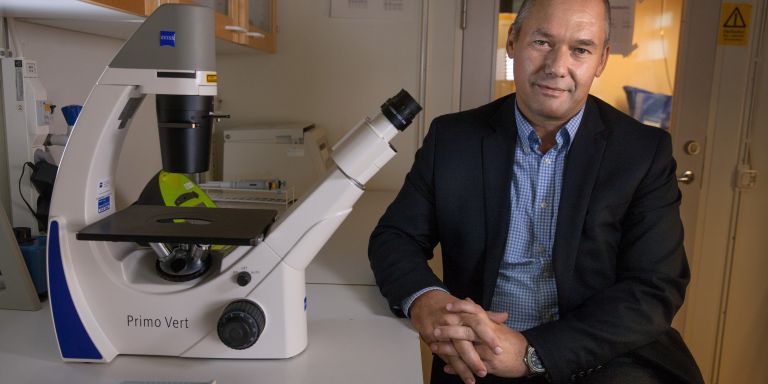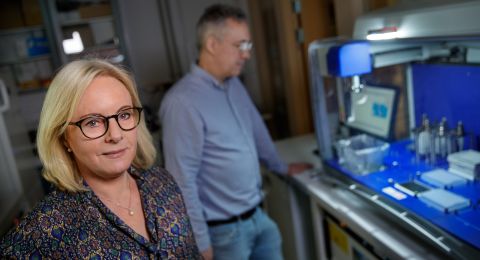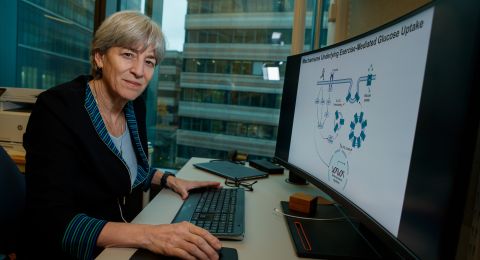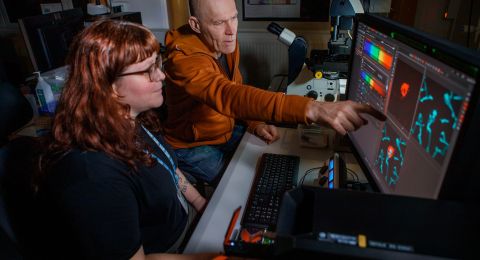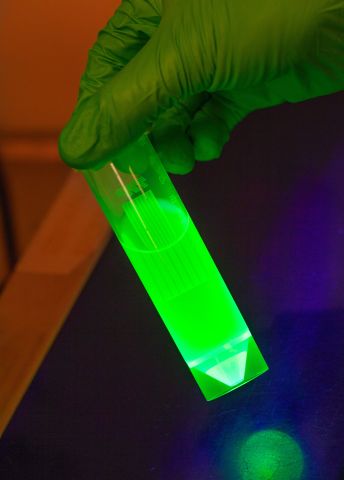
Project Grant 2015
Cancer redox – targeting redox pathways for improved cancer therapy
Principal investigator:
Elias Arnér, Professor of Biochemistry, specializing in selenium biochemistry
Co-investigators:
Rikard Holmdahl
Rolf Kiessling
Stig Linder
Roman Zubarev
Arne Östman
Institution:
Karolinska Institutet
Grant:
SEK 43.7 million over five years
“All team members are experts in different areas of cancer biology; the combination of a common hypothesis and tumor model means we can approach the problem from different angles while still achieving synergies,” explains Elias Arnér, Professor of Biochemistry, specializing in selenium biochemistry.
The project, which is being supported by the Knut and Alice Wallenberg Foundation, is based on redox biology. Redox, i.e. reduction or oxidation of molecules, involves vital chemical reactions in cells. Electrons are gained in reduction, and lost in oxidation. Among other things, these processes ensure we can breathe, and give us, and all other living things, energy. But a small percentage of the oxygen we breathe forms reactive oxygen species (ROS) in cells. These may easily react with structures and functions in cells, which may in turn disrupt an important balance that helps to prevent the onset of disease.
“It has become increasingly apparent over the years that redox processes play a major part in cell function, both in normal, healthy cells, and in cancer cells. Different redox processes influence the way cancer develops, as well as how effective various cancer therapies may be.”

Oxidative stress
It seems that radiotherapy and chemotherapy often increase oxidation in cancer cells, which will enhance the effect of the treatment, if the researchers’ hypothesis is correct.
“We believe that even more effective therapy ought to be possible using elevated levels of free oxygen radicals in cancer cells, by increased oxidation, while we also want to reduce their levels in immune cells.”
Increasing oxidation in cancer cells would cause many of them to die of oxidative stress, while reduced oxidative stress in the immune system may improve its ability to fight cancer cells. The trick is to have one foot on the gas pedal, and one on the brake.
“Oxidative stress is due to many factors: how the cell grows, its metabolism, how it is treated, and how high its sugar levels are.”
Two birds with one stone
Inhibiting the enzyme NOX2, which is found mainly in immune cells and not in cancer cells, could increase reduction in the immune cell, which could theoretically provide better protection against cancer. Another approach would be to stimulate the transcription factor Nrf2, which also increases reduction and could improve immune cell performance.
“Cancer cells already have maximum Nrf2 activity, i.e. peak reduction activity, thereby countering their own already high ROS levels.”
But there is another way, and it is here that Professor Arnér’s selenium expertise comes to the fore. Selenium-containing proteins such as TrxR protect cells against ROS, ensuring they are not exposed to excessive levels of oxidative stress.
“One option might be to inhibit the TrxR enzyme, or functions of GSH (glutathione) in cancer cells. Inhibiting TrxR would kill two birds with one stone. It would increase oxidation in the cancer cells, and kill them, and we also believe it would increase reduction in normal cells such as in the immune system by stimulating activity in Nrf2, the overall result being better cancer protection.”
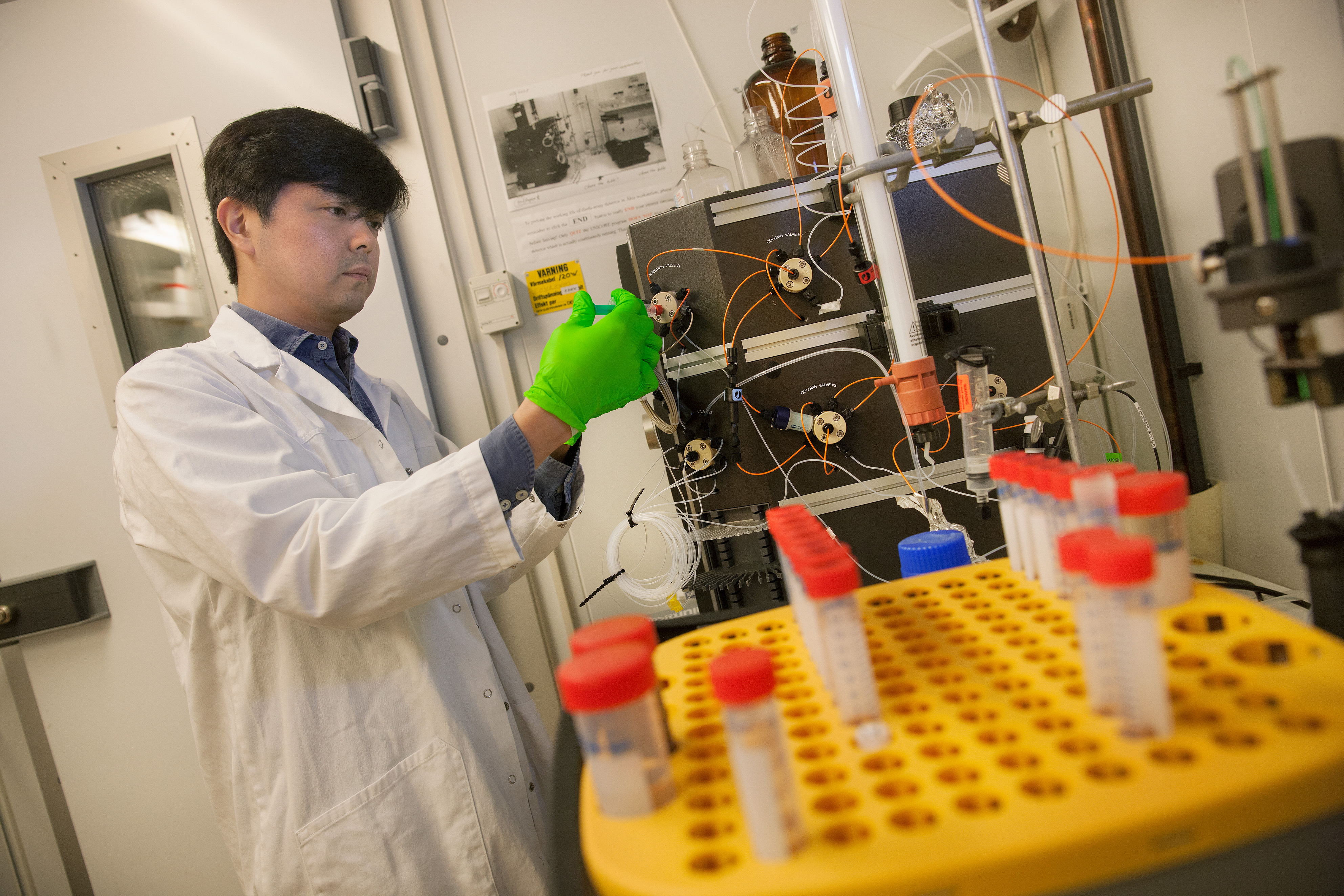
Cautiously optimistic
The aim of the project is to improve existing cancer therapies and drugs, as well as develop platforms for new medicines.
Key elements of the project are the research teams’ use of specific mouse models, their know-how in this field, and about redox biology in cancer.
“We can use genetic engineering to remove important enzymes in the redox processes, and see what happens. We can manipulate both cancer cells and the specific genes of the host mouse. We can also give the mice tumors, and then treat them to see which method and combination of modulation of redox processes are most effective.”
The tumors being studied by the researchers as model systems are lung cancer and skin cancer.
“But we think the principles involved apply fairly generally to most forms of cancer. The involvement of Rolf Kiessling and his team gives us the advantage of access to tissue from skin cancer patients, which we can use to see whether our conclusions and findings from the mouse models hold true for humans.”
Despite the huge amount of cancer research in progress, cancer remains the second-most common cause of death after cardiovascular disease, in Sweden and elsewhere. But Professor Arnér is cautiously optimistic.
“I think we are on to something in this project. We are steadily gaining a better understanding of how cancer occurs and develops, which gives scope for ever better treatment. Progress is constantly being made, and I would be surprised if further medical advances were not made.”
Text Carina Dahlberg
Translation Maxwell Arding
Photo Magnus Bergström
